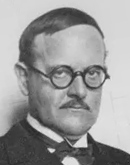

Wilhelm Kreis
*17. 3. 1873 – Eltville am Rhein, Germany
†13. 3. 1955 – Bad Honnef, Germany
Biography
Wilhelm Heinrich Kreis was a significant German architect active in the first half of the 20th century, director of the arts and crafts school in Düsseldorf and a professor at the art academies in Düsseldorf and Dresden. With his conservative work, he managed to establish himself under any regime. From 1892 to 1894, he studied at the Technical University in Munich, where he was most influenced by August Thiersch, who taught classical art there. In 1898, he became an assistant to Paul Wallot at the Academy of Fine Arts in Dresden. In 1902, he became a professor at the arts and crafts school in Dresden. In 1908, he took over the leadership of the arts and crafts school in Düsseldorf from Peter Behrens. In 1915, he volunteered for the army, where he was injured in the Battle of the Somme, awarded the Iron Cross, and promoted to reserve lieutenant. After World War I, he became a professor at the Düsseldorf Academy, and in 1926 he took a professorship after Heinrich Tessenow at the Dresden Academy. Even after the National Socialists came to power, Kreis maintained a privileged position among architects and collaborated on projects with Albert Speer. In 1938, he was appointed Reich Senator for the Fine Arts. From 1940 to 1941, he served as rector of the Dresden Academy. In the final phase of World War II, he made it onto the prestigious list of "Artistically Gifted" in the Third Reich. After the war, he moved in 1949 to Bad Honnef near his nephew Helmut Arnetz, who was to become his heir. Despite his advanced age, he received several prestigious commissions, such as the branch of the provincial bank in Dortmund or the health museum in Cologne. Regardless of his involvement in National Socialist cultural policy, he was a frequent guest at professional discussions and even received the Grand Cross of Merit of the Federal Republic of Germany.
Wilhelm Heinrich Kreis was a significant German architect active in the first half of the 20th century, director of the arts and crafts school in Düsseldorf and a professor at the art academies in Düsseldorf and Dresden. With his conservative work, he managed to establish himself under any regime. From 1892 to 1894, he studied at the Technical University in Munich, where he was most influenced by August Thiersch, who taught classical art there. In 1898, he became an assistant to Paul Wallot at the Academy of Fine Arts in Dresden. In 1902, he became a professor at the arts and crafts school in Dresden. In 1908, he took over the leadership of the arts and crafts school in Düsseldorf from Peter Behrens. In 1915, he volunteered for the army, where he was injured in the Battle of the Somme, awarded the Iron Cross, and promoted to reserve lieutenant. After World War I, he became a professor at the Düsseldorf Academy, and in 1926 he took a professorship after Heinrich Tessenow at the Dresden Academy. Even after the National Socialists came to power, Kreis maintained a privileged position among architects and collaborated on projects with Albert Speer. In 1938, he was appointed Reich Senator for the Fine Arts. From 1940 to 1941, he served as rector of the Dresden Academy. In the final phase of World War II, he made it onto the prestigious list of "Artistically Gifted" in the Third Reich. After the war, he moved in 1949 to Bad Honnef near his nephew Helmut Arnetz, who was to become his heir. Despite his advanced age, he received several prestigious commissions, such as the branch of the provincial bank in Dortmund or the health museum in Cologne. Regardless of his involvement in National Socialist cultural policy, he was a frequent guest at professional discussions and even received the Grand Cross of Merit of the Federal Republic of Germany.
The English translation is powered by AI tool. Switch to Czech to view the original text source.










